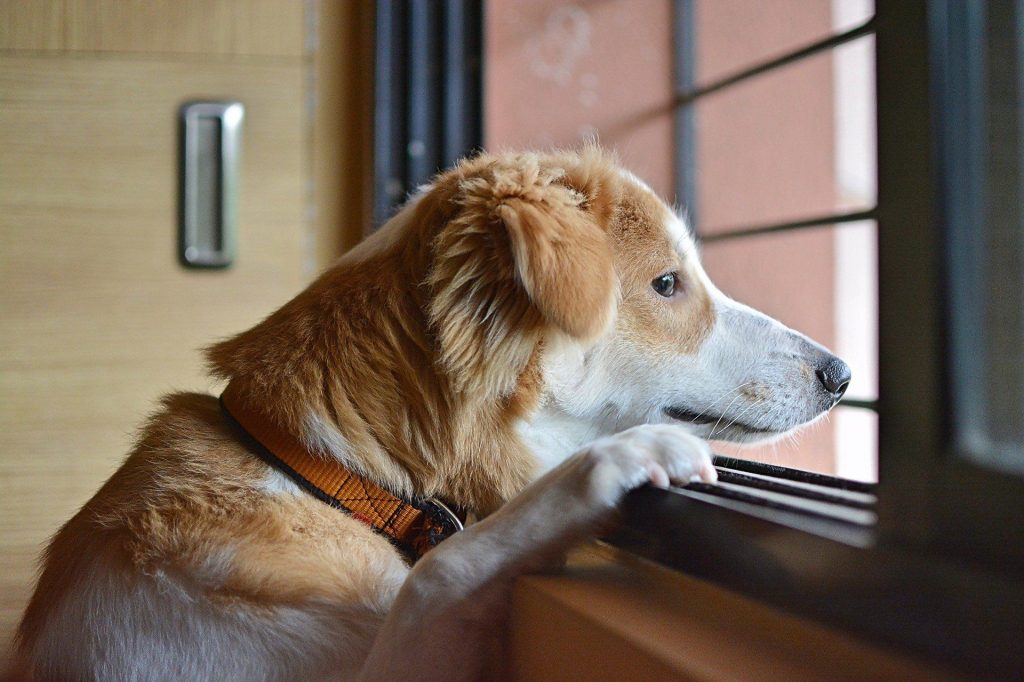Separation anxiety in dogs is a common yet distressing issue for both pets and their owners. As a loving pet parent, it’s heartbreaking to see your furry friend struggle with the fear of being left alone. This blog post aims to provide an in-depth understanding of separation anxiety, its signs, causes, and effective strategies to help your dog cope. If you’ve ever asked yourself, “Why does my dog act this way?” or “How can I help my anxious pup?” you’re in the right place.
Understanding Separation Anxiety
Separation anxiety occurs when a dog becomes excessively distressed when separated from their owner or primary caregiver. While some degree of anxiety is a normal response to being alone, dogs with separation anxiety may display extreme behaviors that can lead to destructive actions, excessive barking, and even self-harm.
Signs of Separation Anxiety
Recognizing the signs of separation anxiety is crucial in addressing the issue. Common behaviors include:
– Excessive Barking or Howling: Dogs with separation anxiety often vocalize their distress when left alone.
– Destructive Behavior: Chewing, digging, or scratching at doors and windows can indicate an attempt to escape or cope with anxiety.
– Pacing: Dogs may walk in circles or pace back and forth, which is a sign of agitation.
– Urinating or Defecating Indoors: Even if house-trained, anxious dogs may have accidents when stressed.
– Clinginess: Anxious dogs often follow their owners around the house, showing signs of distress when they attempt to leave.
Causes of Separation Anxiety
Understanding the root causes of separation anxiety can help in developing an effective treatment plan. Some common causes include:
– Early Life Experiences: Dogs that were poorly socialized, experienced trauma, or were surrendered to shelters may have heightened anxiety.
– Change in Routine: A sudden change in a dog’s daily routine, such as moving to a new home, the loss of a family member, or changes in the owner’s schedule, can trigger anxiety.
– Lack of Independence: Dogs that are overly reliant on their owners may struggle with being alone.
– Genetic Predisposition: Some breeds are more prone to separation anxiety, such as Labrador Retrievers, Border Collies, and Dachshunds.
Strategies to Help Your Dog Cope with Separation Anxiety
If your dog is suffering from separation anxiety, there are several strategies you can implement to help them feel more secure and relaxed when you are away.
1. Gradual Desensitization
Desensitization involves slowly getting your dog used to being alone for short periods. Start by leaving the room for a few minutes and gradually increase the time you are away. This method helps your dog understand that you will return, reducing their anxiety.
2. Create a Safe Space
Designate a comfortable area for your dog where they can feel safe when you leave. This space can include their bed, toys, and items with your scent, like a worn T-shirt. A crate can also be beneficial if your dog is crate-trained, as it provides a den-like environment that can be comforting.
3. Engage Their Mind
Providing mental stimulation can help distract your dog and alleviate anxiety. Puzzle toys, treat-dispensing toys, and interactive games can keep your dog occupied while you are away. This engagement can also reduce boredom, which can be a contributing factor to anxiety.
4. Exercise Before Leaving
Taking your dog for a long walk or engaging in playtime before you leave can help tire them out. A well-exercised dog is less likely to exhibit anxiety symptoms because they have expended energy and are more likely to rest.
5. Use Calming Aids
Consider using calming aids such as pheromone diffusers, anxiety wraps, or natural supplements designed to reduce stress in dogs. Consult your veterinarian for recommendations tailored to your dog’s needs.
6. Establish a Routine
Dogs thrive on routine. Establishing a consistent schedule for feeding, walking, and playtime can provide a sense of security for your dog. They will learn what to expect throughout the day, which can reduce anxiety levels.
7. Training Commands
Teaching your dog basic commands like “stay” and “place” can help them feel more secure when you leave. Reinforce these commands with positive reinforcement techniques, ensuring your dog associates your departures with positive outcomes.
8. Professional Help
If your dog’s separation anxiety is severe or doesn’t improve with home strategies, consider seeking professional help. A certified dog trainer or a veterinary behaviorist can provide tailored advice and behavior modification techniques.
The Role of Medication
In some cases, medication may be necessary to help manage severe separation anxiety. If your dog is showing extreme signs of distress, consult your veterinarian about the possibility of using anti-anxiety medications. These can be used in conjunction with behavior modification techniques for a comprehensive approach.
Conclusion
Separation anxiety in dogs is a challenging but manageable condition. By understanding the signs and causes, you can implement effective strategies to help your furry friend feel more comfortable when left alone. Remember, patience and consistency are key. It’s important to support your dog through this process and celebrate small victories along the way.
If you’re struggling with your dog’s separation anxiety, know that you’re not alone. Many pet owners face similar challenges, and with the right tools and knowledge, you can help your dog overcome their fears. Don’t hesitate to reach out for professional support if needed, and remember to give your pup plenty of love and reassurance. Together, you can work towards a happier, more relaxed home environment.
With dedication and care, you can help your dog feel secure and confident, reducing their anxiety and making those departures a little easier for both of you. Don’t leave me, indeed—let’s work together to ease that stress!







